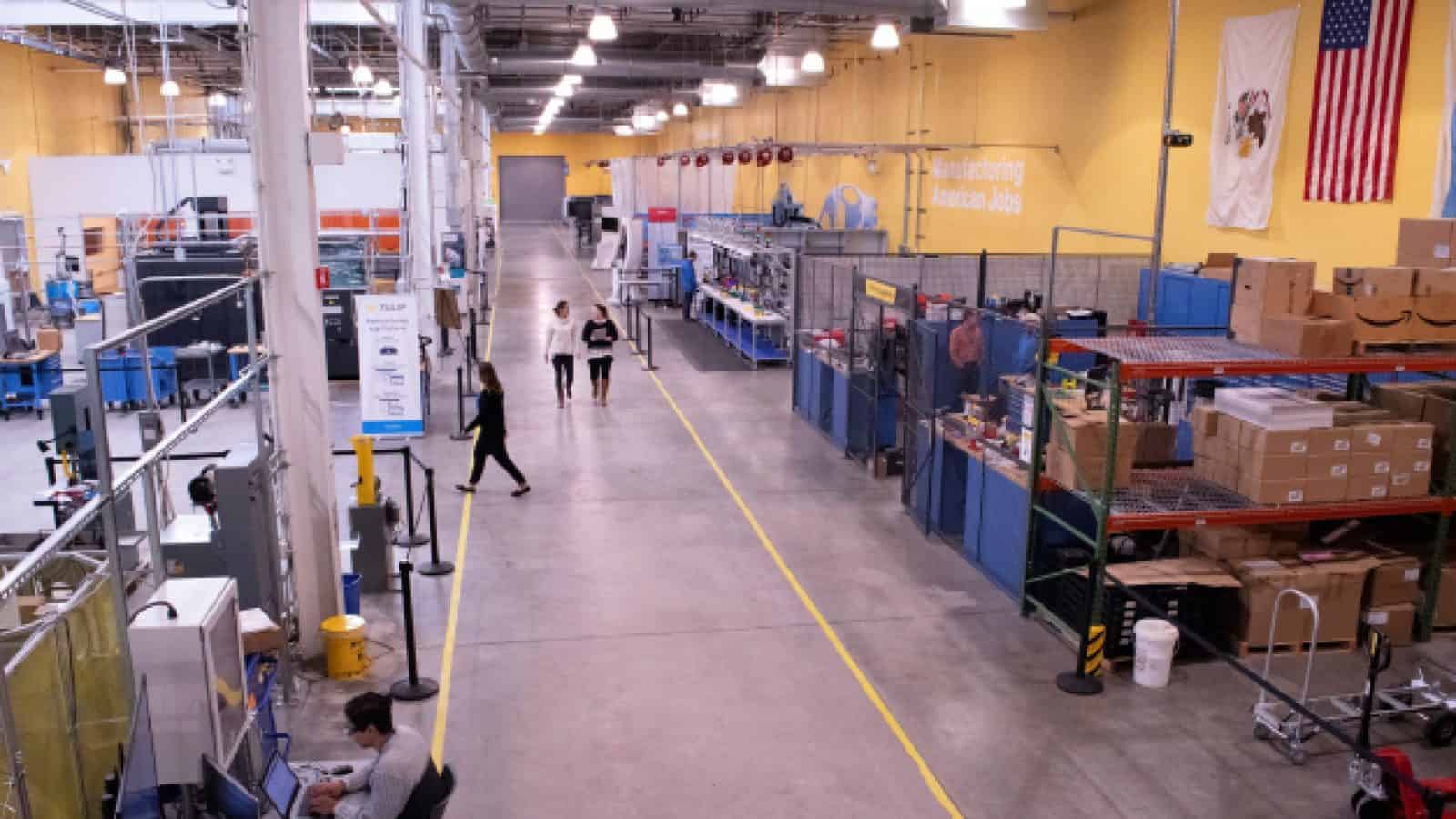Laying the Foundation for Factories of the Future

Bringing together the right IT and OT systems will be key for manufacturers to realize a digital future.

To remain competitive in an increasingly digital and interconnected environment, companies across the manufacturing sector are working toward data-driven, lights-out facilities. But manufacturers cannot reach that point without having foundational information technology and operational technology infrastructures that work symbiotically to unify supply chains, cloud platforms, and other aspects of operations.
To take advantage of technologies such as artificial intelligence, machine learning, digital twins and robotics, manufacturers need to change the way they think about network infrastructure. Integrating historically siloed IT and OT infrastructures will be central in developing the factories of the future. Companies should make investments that make it easier for the OT side to make decisions using data, and that make it easier for the IT side to understand how the OT environment works.
Businesses will not be able to embrace advanced technologies if they don’t have the foundational data highway and security in place to support them. For many teams, building an integrated IT/OT infrastructure foundation will require a mindset shift. Rather than just a means of sending data from Point A to Point B, these IT and OT foundations — when integrated holistically — can enable more circular connectivity throughout operations, better security, continual improvements in efficiency and, ultimately, growth.
Shifting the Mindset
Especially with the rise of more regulatory requirements around data security, manufacturers need to determine whether their IT and OT infrastructure align with their business goals and make intentional efforts to use the infrastructure’s capabilities proactively across the organization. Leadership teams should view IT and OT foundations as visibility and containment tools in detecting viruses, performance issues and security gaps. Manufacturers will not be able to make meaningful improvements in supply chain efficiencies and elsewhere unless they prioritize such efforts.

“Businesses will not be able to embrace advanced technologies if they don’t have the foundational data highway and security in place to support them.”
For many businesses, this will mean collapsing IT and OT to be more connected to each other, which will enable faster decision-making with the use of real-time data. This will help foster the necessary mindset shift from viewing networks solely as a way to connect machines to seeing the broader scope of their functions. Developing more resilient IT and OT foundations will be especially crucial for boosting capabilities in the following three areas:
- Detection: Manufacturers can leverage symbiotic IT and OT networks to improve end-to-end visibility throughout the business, making it easier to identify everything from operational issues to security threats.
- Diagnostics: More connected infrastructure will allow companies to use tools like predictive analytics to diagnose problems and eventually automate corrective actions. This can save time by requiring less human involvement.
- Compliance: There are a host of compliance rules and implications to navigate related to information infrastructure, whether from the federal government or other parties. Once manufacturers have greater visibility across their networks, they will also have a better real-time understanding of whether their platforms and systems comply.
On the compliance front, the stakes are higher than ever; in the wake of ransomware attacks in recent years, insurers have elevated the requirements companies need to meet in order for them to be covered. Some such requirements are even more strict than rules put forth by the National Institute of Standards and Technology. That demand from insurance providers underscores why now is the time to invest in more resilient systems.
Before manufacturers can make strategic investments to upgrade their aging legacy infrastructure, however, they will need to understand how their networks currently work. This may sound obvious enough, but for platforms that have been continually running for a decade or more without being turned off, teams may not have a clear understanding about what happens to operations when things go offline.

“The impact of network outages will only become more significant as factories become more connected and automated.”
In the manufacturing space especially, this can have enormous impacts on worker safety as well — for instance, a factory floor pressure sensor going down might pose risks to physical safety. Businesses need to ensure that the IT infrastructure side of the house takes those operational factors into account and understands the crossovers between IT and OT risks. Given that it has become standard to air gap systems, companies will need to make thoughtful decisions about how to harmonize these two different aspects of technology infrastructure without opening themselves to vulnerabilities.
The impact of network outages will only become more significant as factories become more connected and automated. Because those technologies are network-based and require moving more operations to the cloud, manufacturers will need to have redundancies in place for the systems they use to move information to the cloud. In essence, that information highway needs to be tested for reliability, and teams should have clear plans in place for when outages happen.
Shop Floor to Top Floor
Much like manufacturers need to have a holistic approach to the ways their OT and IT systems work together, they should also understand the broad scope of how their network architecture connects the shop floor to the top floor — that is to say, how their data is able to move through all aspects of operations, from assembly lines up through human resources, finance, executive leadership and other functions.
Industrial machinery and devices that gather and often transmit data, for instance, should have the ability to interface with enterprise resource planning systems to inform decisions related to inventory, raw material needs, forecasting, finance and more. In an era when supply chain constraints are common across most industries, it’s crucial that all lines of the business have better visibility into disruptions that may be on the horizon. Companies should also take into account data warehouses and SCADA systems when working toward this broader connectivity.

“Manufacturers that don’t have the right system architecture in place will be limited in how they can put data to use in improving supply chains, productivity, and efficiency.”
With the rise of the IIoT introducing more and more data-driven devices and widgets to the shop floor, the ability to integrate factory data across the business will be more important than ever. Manufacturers that don’t have the right system architecture in place will be limited in terms of how they can put data they already have to use in improving supply chains, productivity, and efficiency.
The Path Forward
In assessing their current state and needs for the future, there are several specific technologies that manufacturers should ensure they have in place or are migrating toward to ensure a stable, high-performing, and highly redundant foundational network infrastructure. But beyond individual tech capabilities, companies need to educate their teams about the potential of automation, the possibilities allowed by greater IT/OT connectivity, and help them understand that time is of the essence in building more robust infrastructures. Furthermore, organizations should have training in place to help employees on the OT side feel more fluent in data, and to help those on the IT side better understand the OT environment.
The journey toward better foundational technologies will look different from business to business; manufacturers should develop a plan for how it translates to their individual operations. Only once team members understand the importance of that journey can the organization make the right investment decisions. M
About the authors:

Ron Beck is a principal at RSM US LLP.

John Chambers is a director at RSM US LLP.

Scott Hermanson is a principal at RSM US LLP.
.
